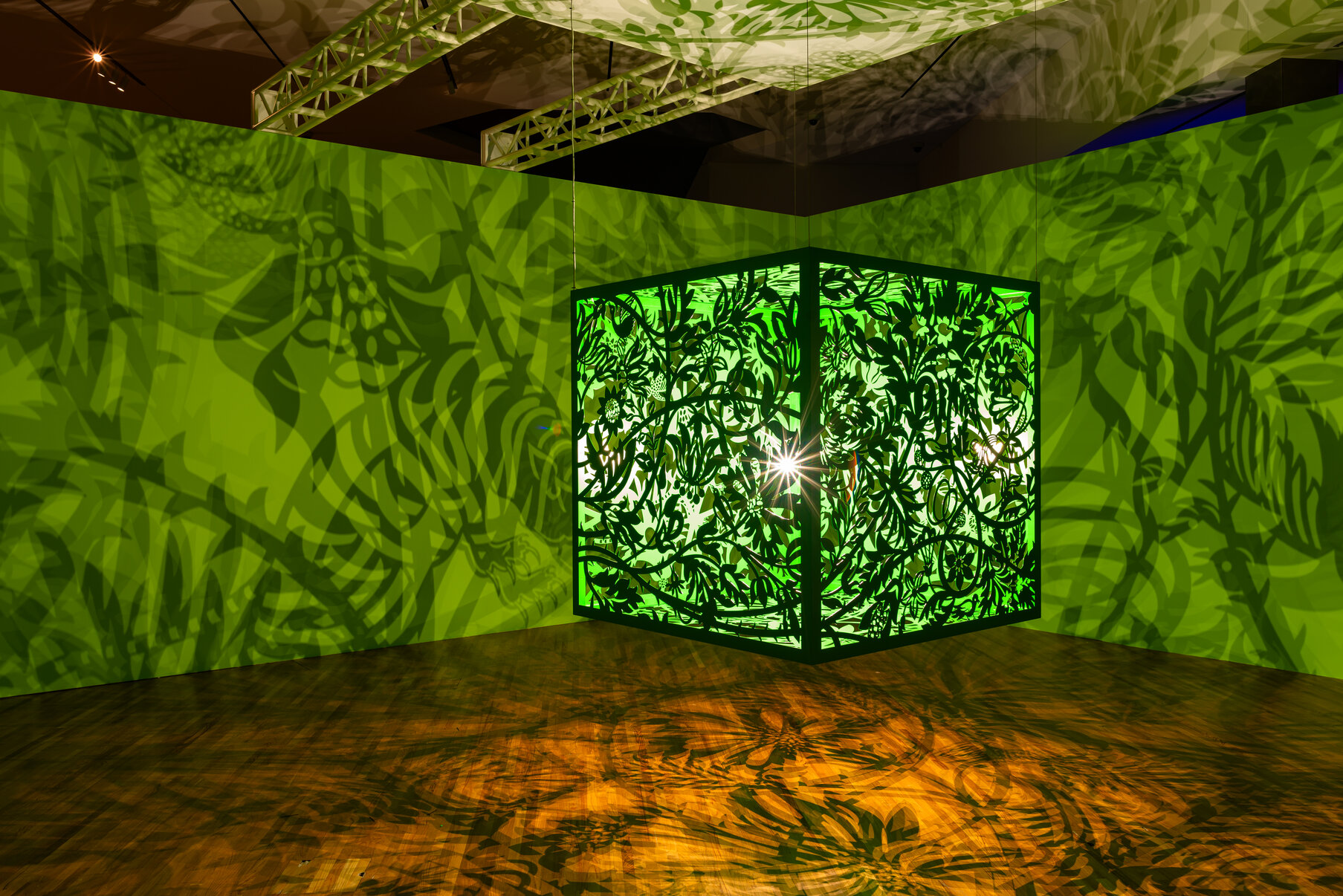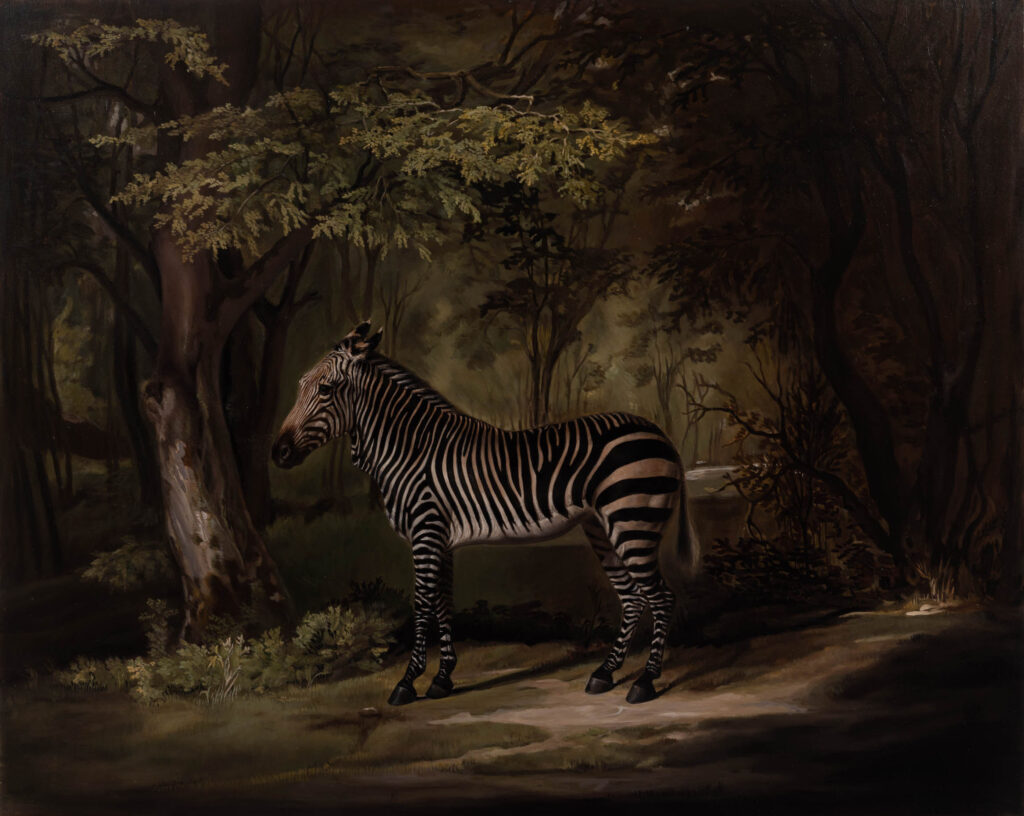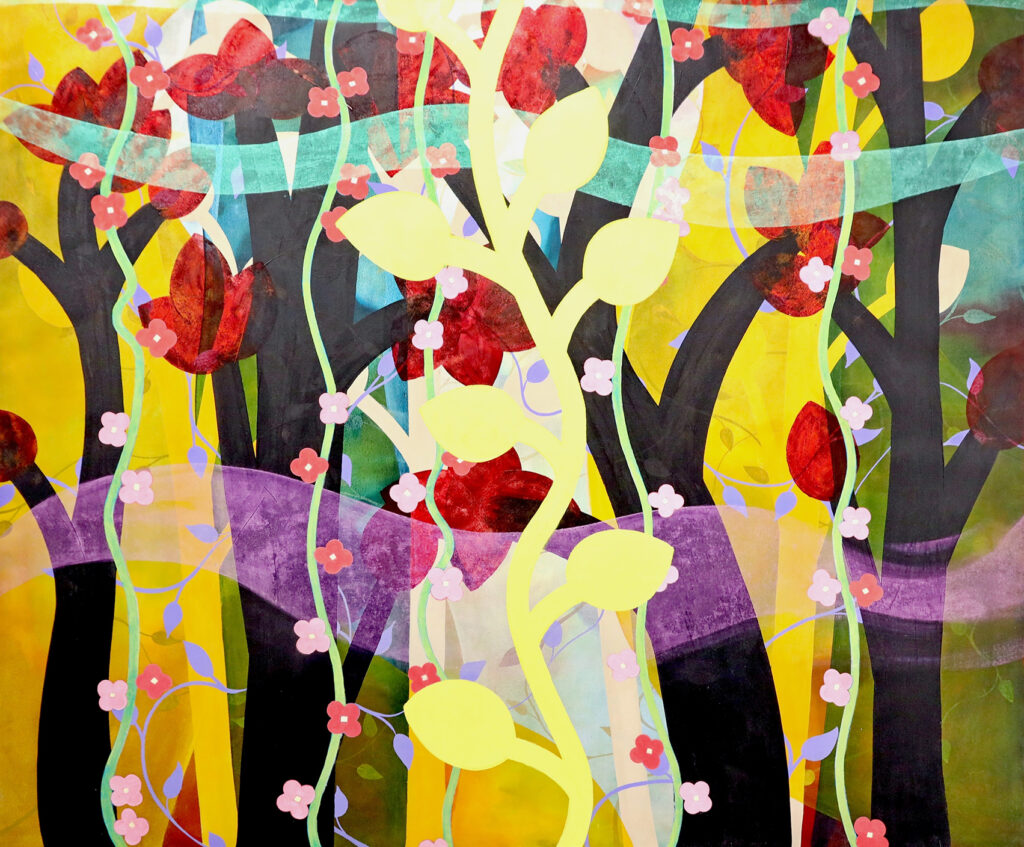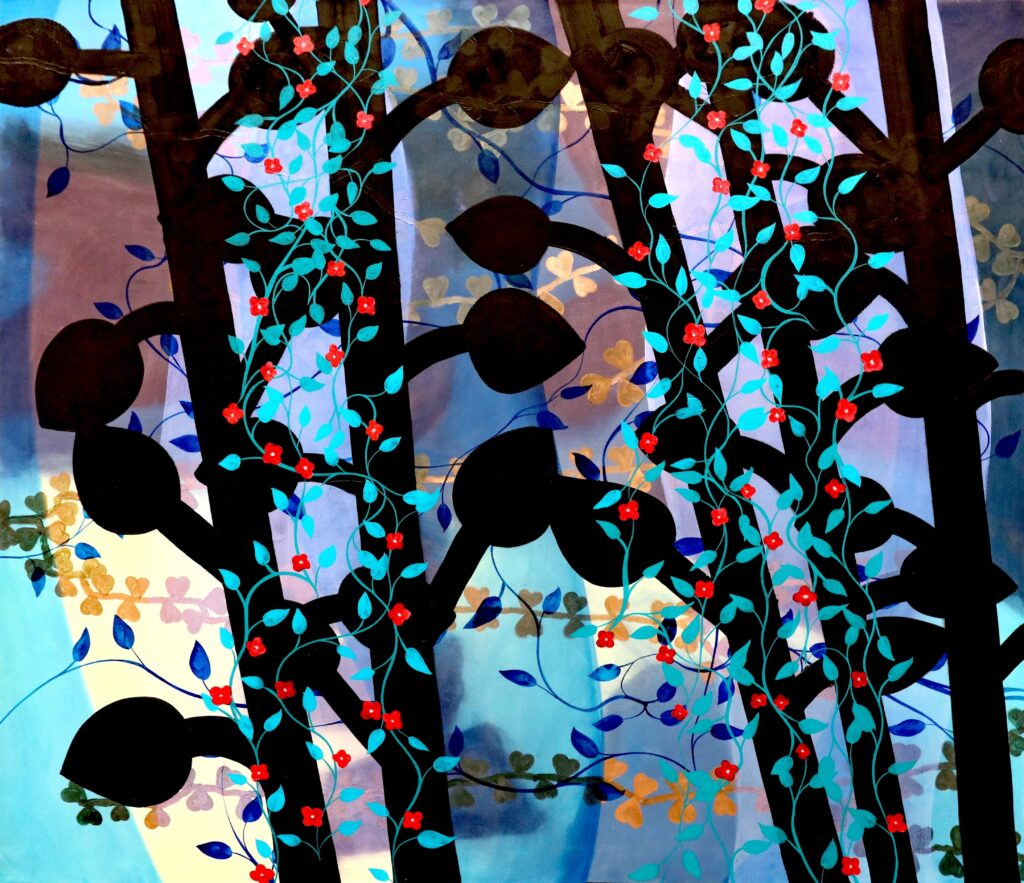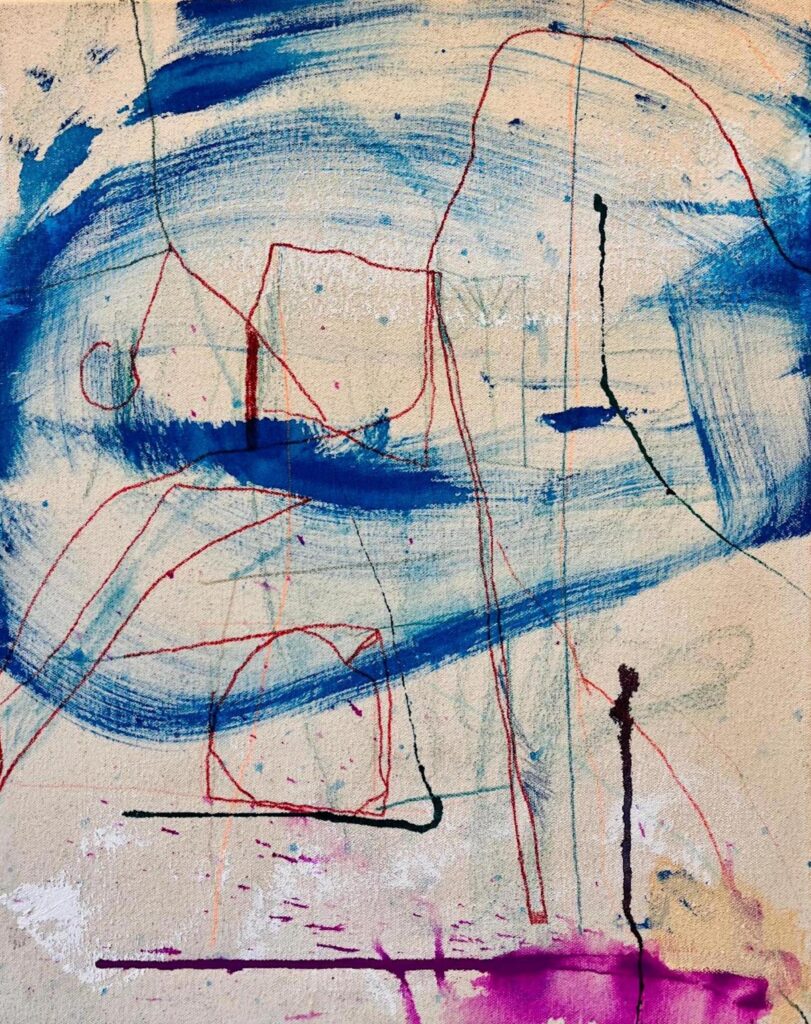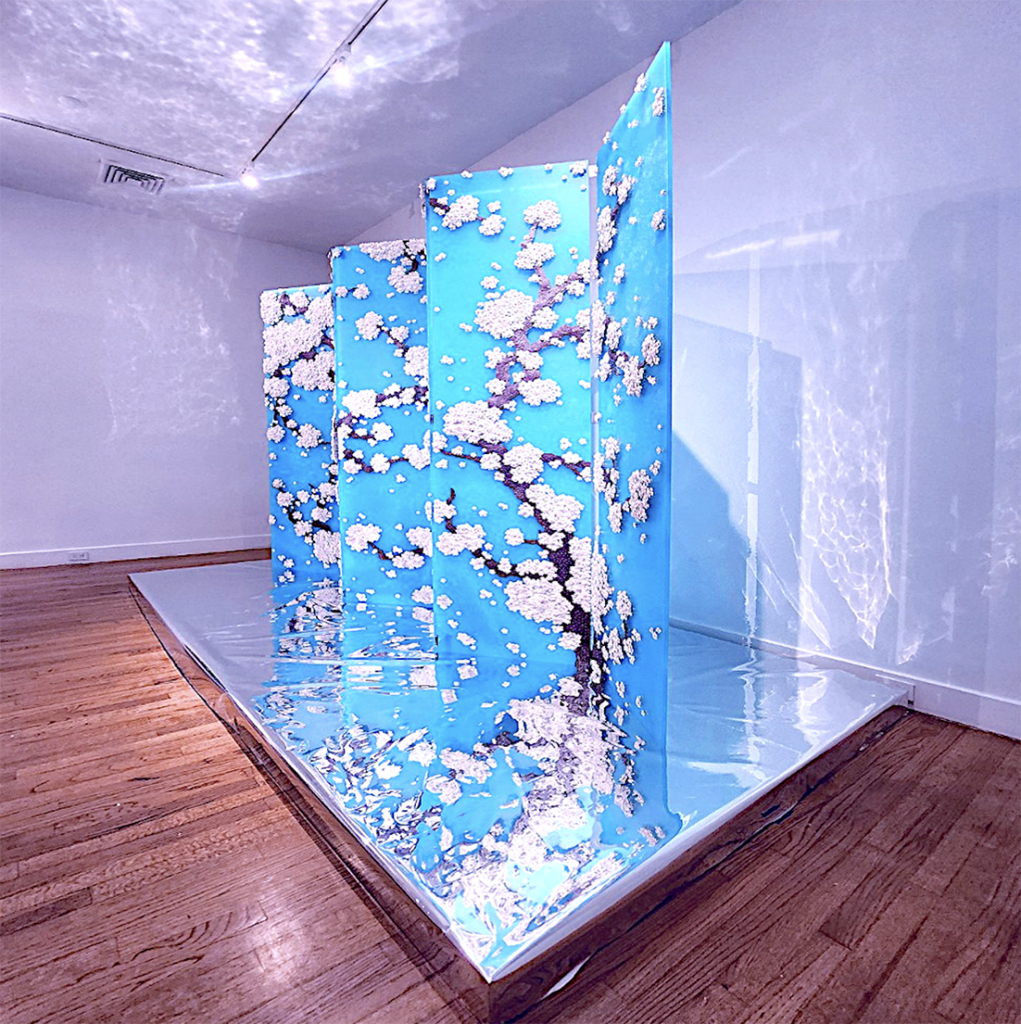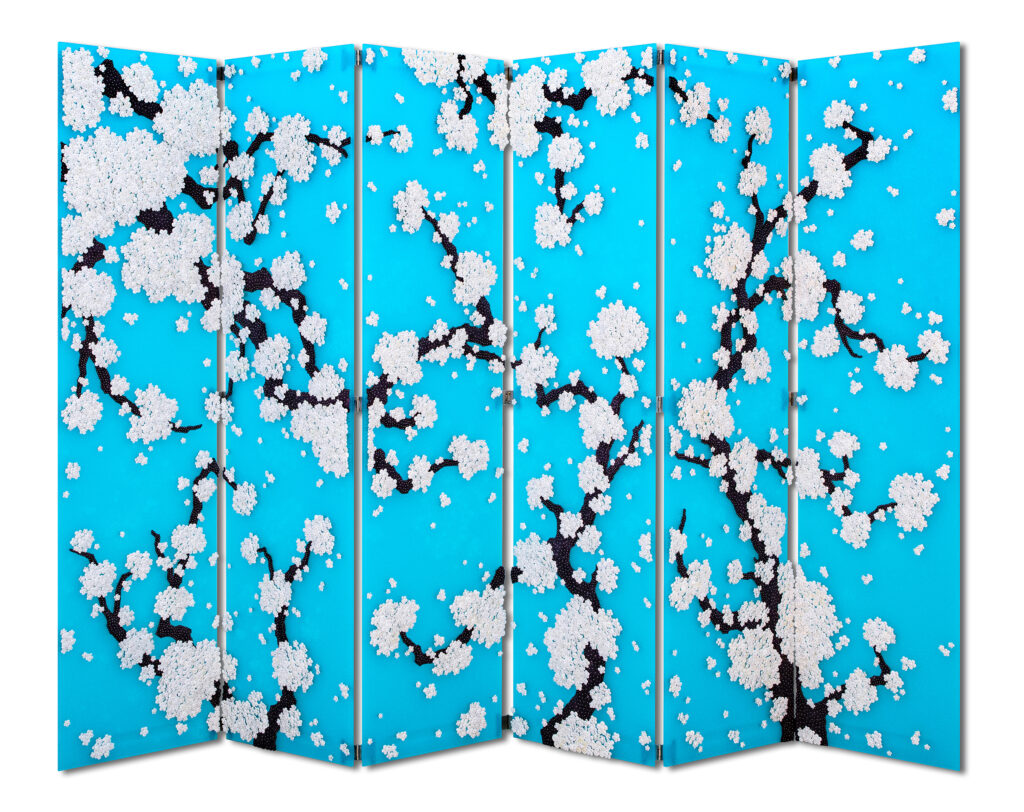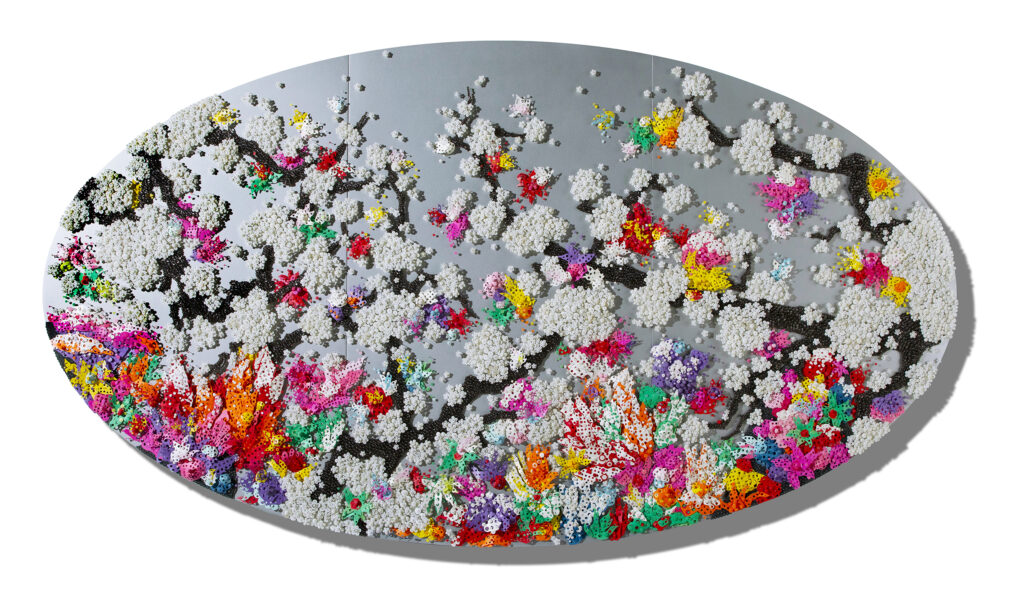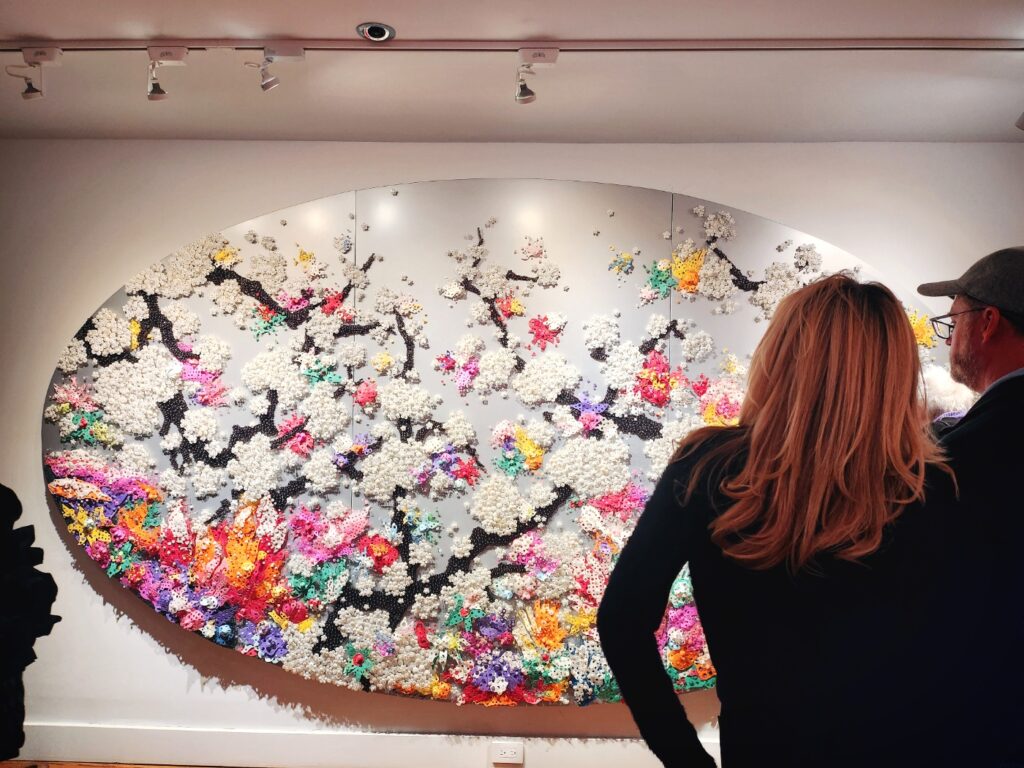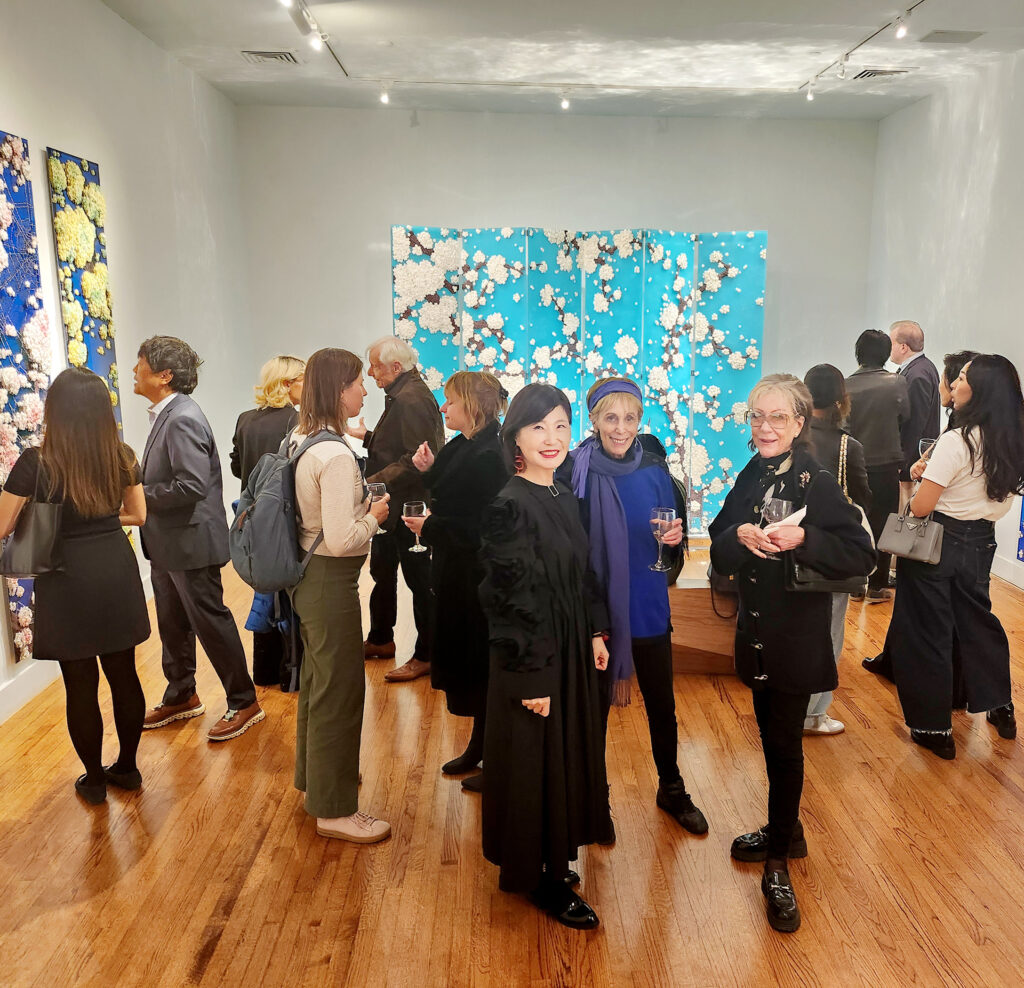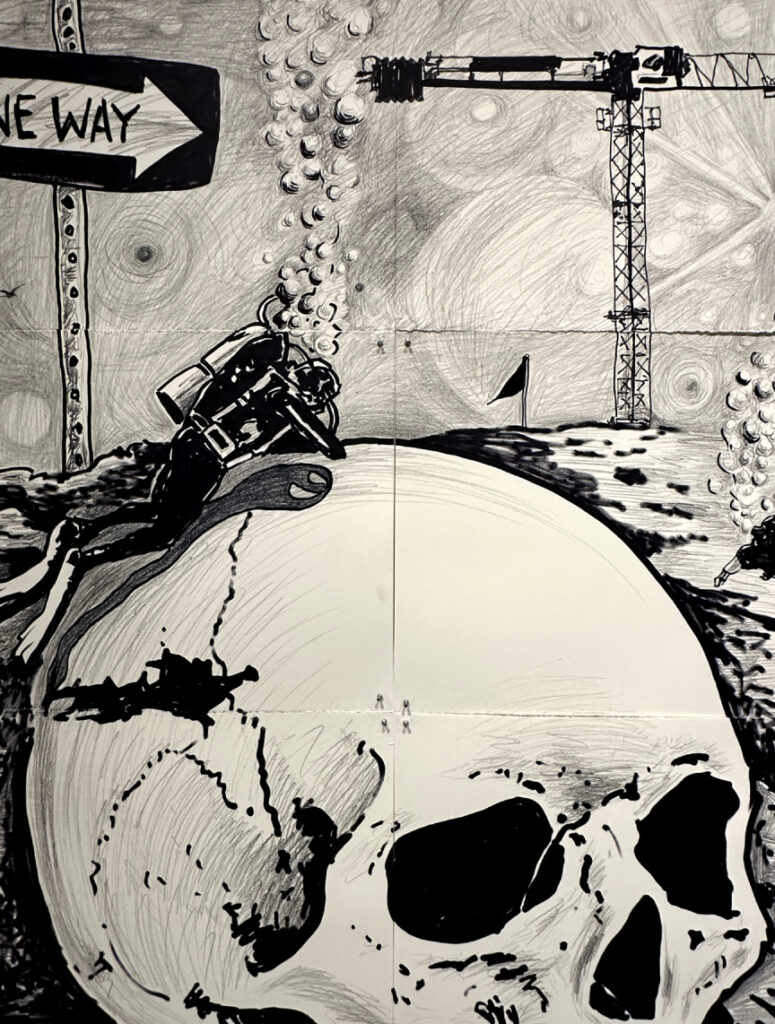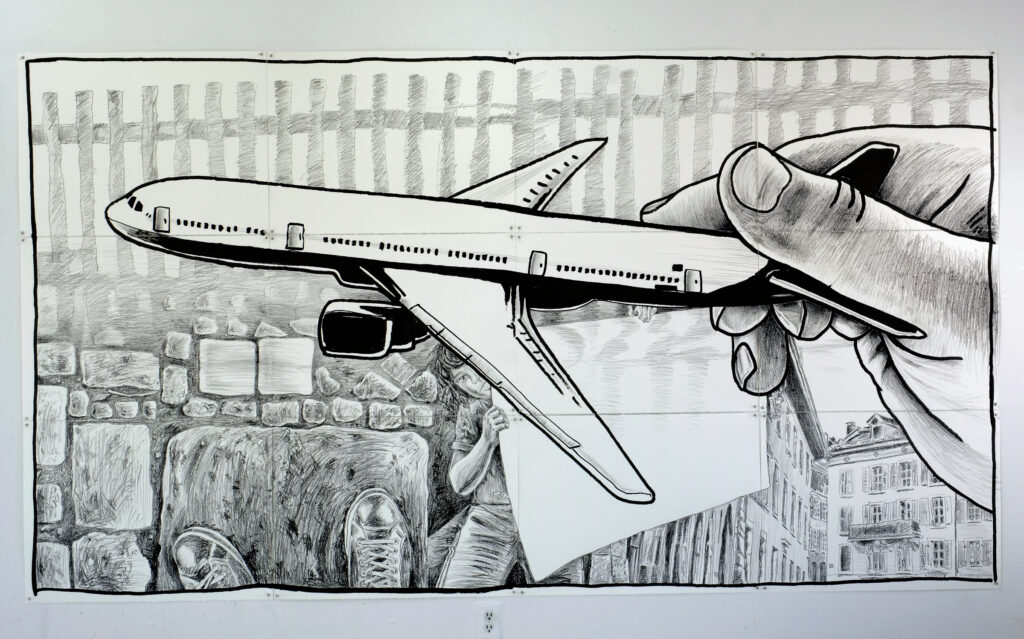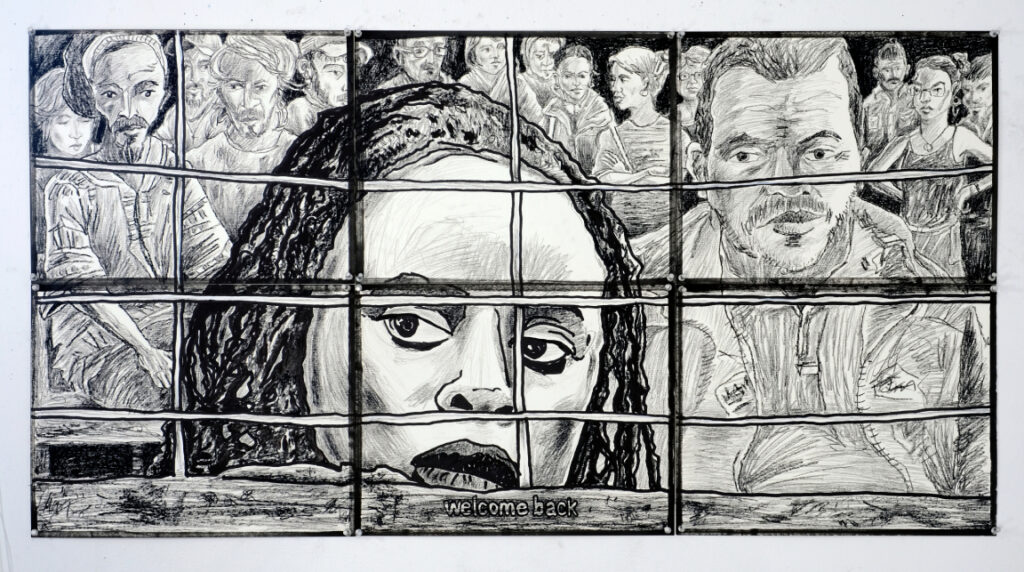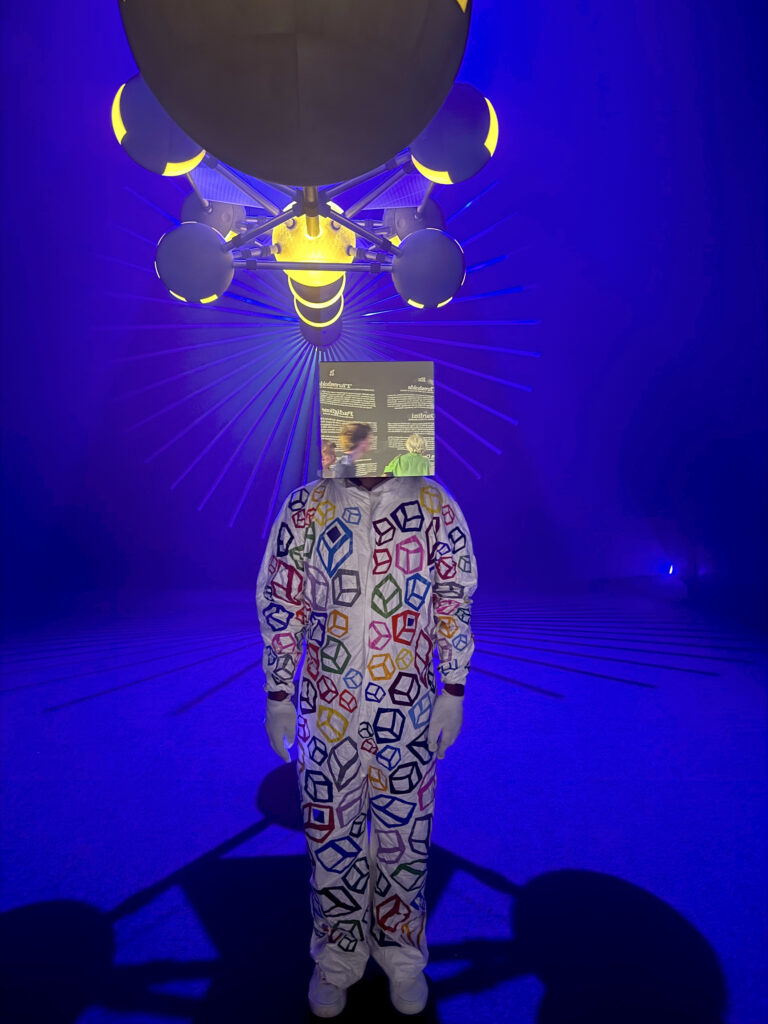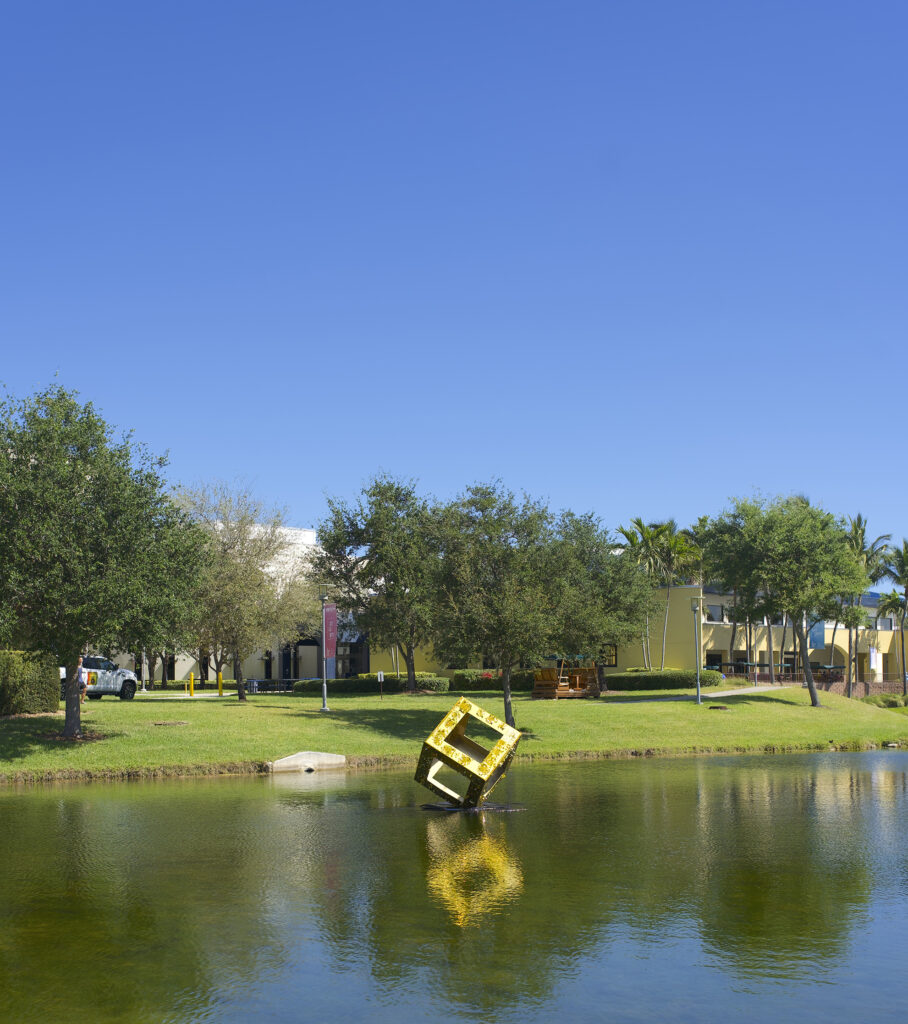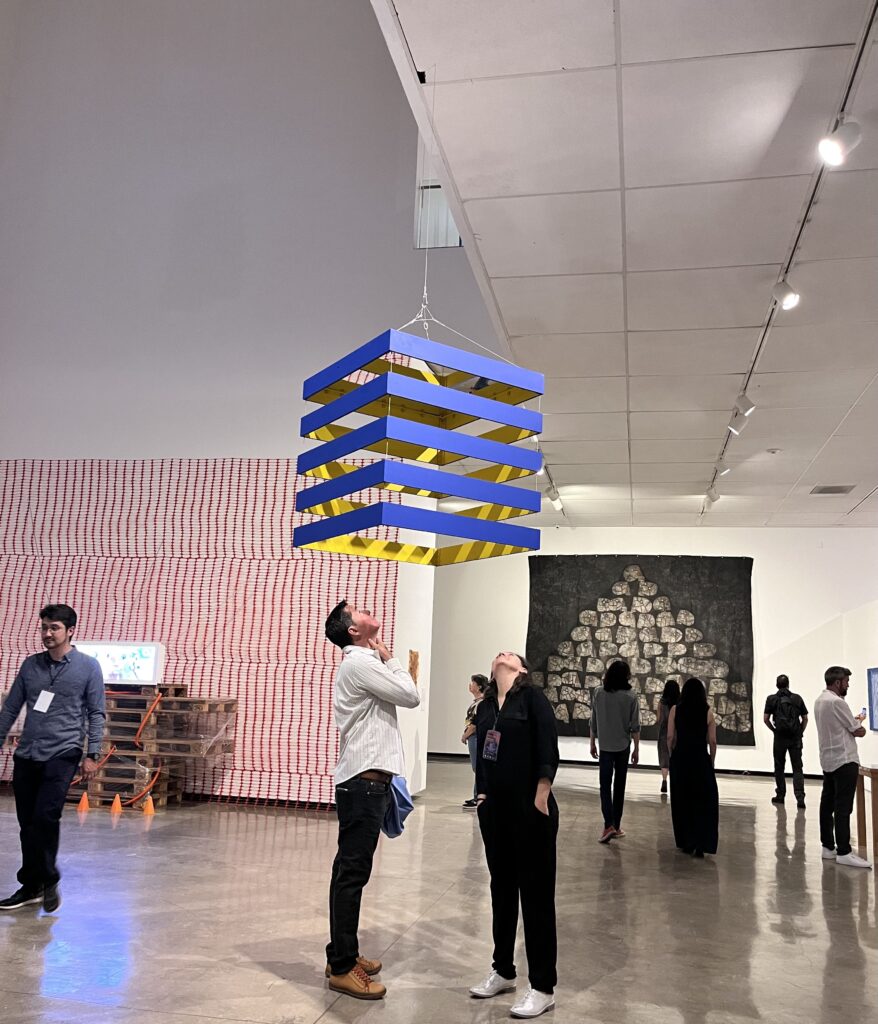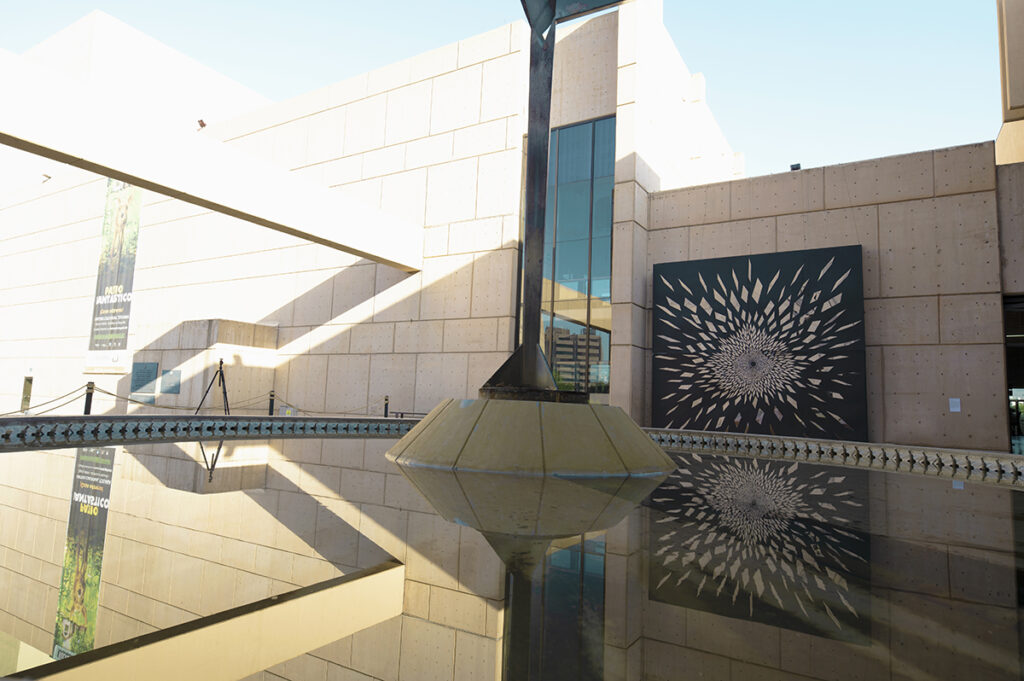by Emese Krunak-Hajagos
The entire Aga Khan Museum was designed around light, so as its 10th anniversary approached the curators decided to celebrate it with an exhibition entirely about light.
Light is central to the museum and visitors experience it right away upon entering the building. In the hallway, To Breathe, Korean artist Kimsooja’s site-specific installation takes us to a different dimension, a dimension of magical light. The windows are covered with diffraction grating film and as daylight passes through it reveals rainbows throughout the space. The magic of this work is in making the invisible visible. Coloured light always amazes and fills us with joy. This kind of play with light can be found on many levels of the museum, shining through windows and creating its own ‘artworks’ on walls and floors.
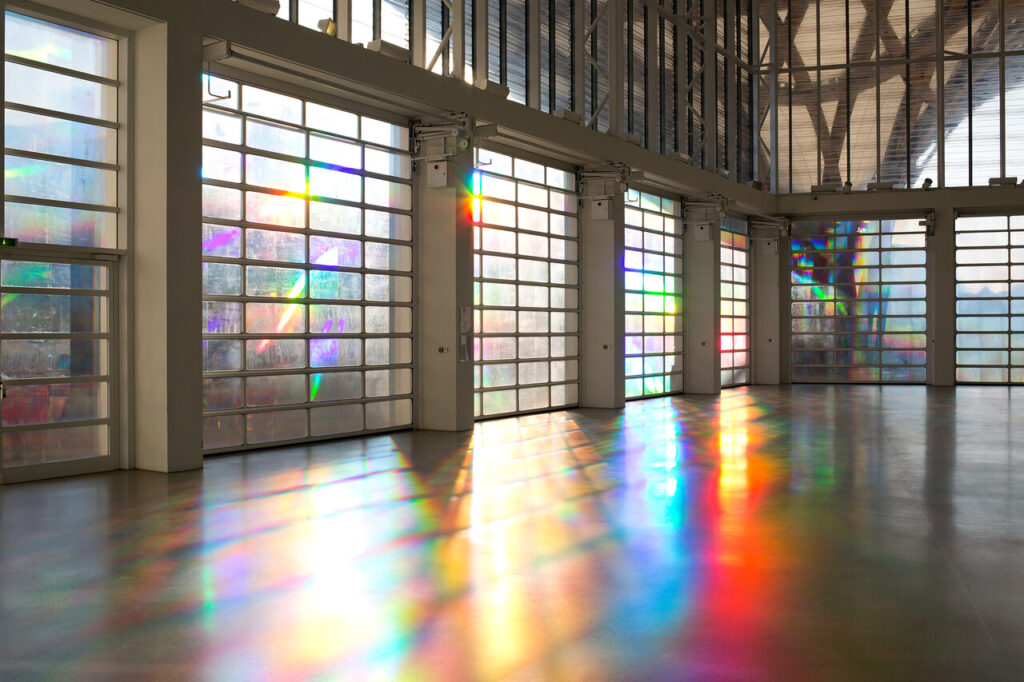
There is nothing better than light as the focus for the anniversary exhibition. There are so many kinds: the light of the sun, the moon and the light inside us, the light we absorb and the light we radiate. The exhibition titled, Light: Visionary Perspectives, is an amazing combination of scientific and spiritual approaches, involving both historical and contemporary visions.
Tannis Nielsen’s, mazinibii’igan / a creation (2020) is the first piece I see. The Anishinaabemowin word ‘mazinibii’igan’ means “a drawing, a sketch, or a design.” It is a continuous video installation with many possible beginnings and endings. The installation is a result of Tannis Nielsen’s research into electromagnetic energies. She discovered that residual radiation stems from the Big Bang, believed to be the origin of the universe.
Stepping into the installation I am enveloped by darkness. It must be the beginning of the universe when nothing existed. Then some weak light grows, and I hang on to it with hope, as any little light is better than total darkness. Suddenly bright lights with impressive soundtracks surround me and it is almost too much, but I lose myself in this otherworldly installation and stop thinking. It surrounds me. As the story told by Elder Marie Gaudet (Turtle Clan Anishinaabe from Wikwemikong), a knowledge keeper and practitioner of healing songs and ceremonies, the installation invites us to reimagine creation. So, it seems I am inside the process of the creation that started, as the narrative says, with a single light emerging from the darkness. Am I swallowed by this installation? I feel I’m in the middle of it, totally absorbed by the darkening and lightening universe. It is a very complex world where dark, light, sound, narrative and music work together perfectly as I become part of the creation. It feels so good, uplifting and I am happy and amazed. Will I ever be able to leave it or do I want to stay inside and see what comes next? It is pulsating with energy, and I feel absorbed in it, an almost physical sensation. It is also very spiritual and mesmerizing. It was hard to distance myself from this installation and I needed some time to re-enter reality.
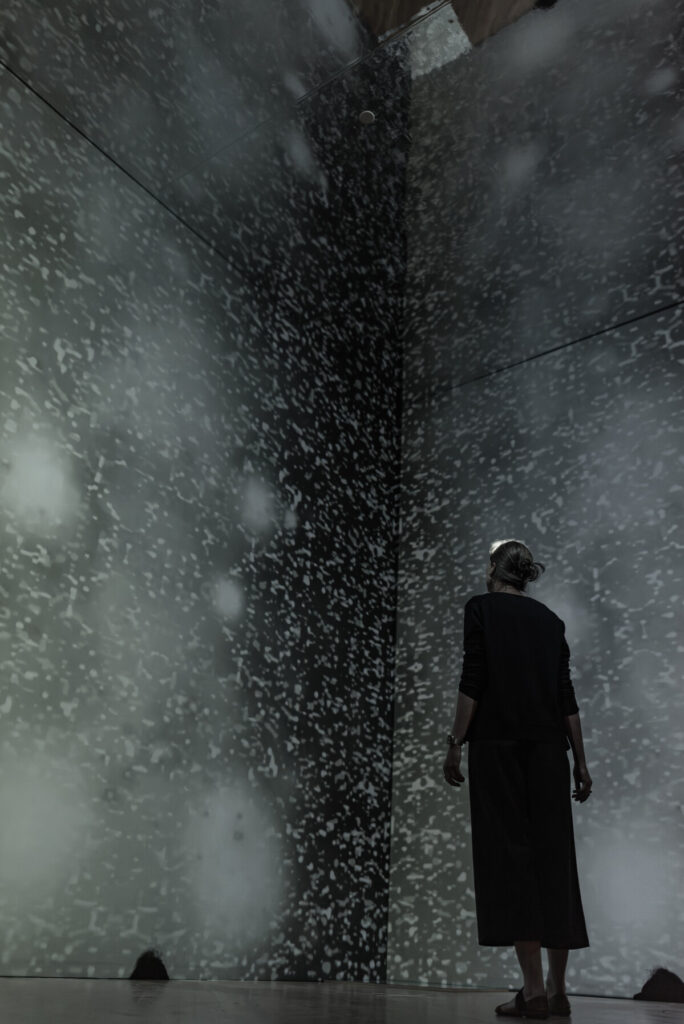
What I saw next, I can barely call ‘reality’ as Anish Kapoor’s two mirrors, facing each other from opposite walls, playing a game with me, challenging my perception. It is about what we see or what we think we see. Long ago Muslim philosophers thought that the light came out from our eyes. In the main floor exhibition room, the book Opticae Thesaurus addresses this idea. The title of the book is a Latin translation of Kitab Al-Manazir (Book of Optics) by 10th-century Muslim scholar and mathematician Ibn al-Haytham. He revolutionized the field by arguing that sight is made possible by light traveling to the eye, rather than by light emanating from it. His discovery influenced the western world as well and led to the development of the camera obscura and, ultimately, the modern camera.
Kapoor’s two mirrored disks, one made of steel and the other of wood and lacquer, remind me of our eyes. From their concave surface they show a view we don’t expect, seeing ourselves and the space in a different way. It is very complex. First, from a distance you see yourself upside down, then, as you get a closer look, you are standing on the ground again. The mirror is creating its own reality. Mirrors in art often denote self-reflection, so what’s happening here? Which one of the images is real or is all just visual illusion? As Bita Pourvash, Associate Curator, Aga Khan Museum says, “we also must understand that we don’t only see with our eyes but with our mind and heart and how they are connected in creating an image.”
I visited the exhibition a day before it opened, and the light was somewhat erratic, some areas a little darker. Stepping out of the view of the mirrors and looking back as they were reflecting on each other I wondered if, somehow, they communicate with each other in the dark when no one is around, sharing their experiences of us and how their tricks confused us.

The title A Thousand Silent Moments (Rain Forest) reminds me of Gabriel García Márquez’s book, One Hundred Years of Solitude, that also takes place in a rain forest. It is a magical story like Anila Quayyum Agha’s. Inspired by objects and paintings in the museum collections, American-Pakistani artist, Anila Quayyum Agha, created a lacquered steel and LED installation. On the walls and on the floor, we see a series of laser cut patterns of flowers, leaves and animals from various cultures and historical periods projected from the glass box in the middle of the room. A bright green light surrounds me. At first, I thought, how peaceful. Indeed, it is beautiful; it is paradise or the garden of Eden — harmony is created. Then I recognize that my shadow becomes part of the installation, appearing on the floor and on the walls. The installation is built on contrasting elements: light and shadow. They play, they change as the movement continues. It reminds me of lying under a large tree on a summer day, looking at the light coming through the leaves. It is, like this installation, wonderful and peaceful; I could enjoy it all day long. However, we all know that where there is light, there is shadow, as shadow can’t exist without light. As I walk further into the room and look in every possible direction, I become even more aware of my shadow becoming an interactive part of this installation. There is a very intense movement of images and light, everything is changing. The harmony I felt at first, suddenly breaks. I feel the opposing forces, light and shadow, including my own, as though they are in a dialog. As Quayyum Agha says about her work, “light and pattern are intentionally utilized to create ‘perceptually soothing and conceptually challenging environments.”
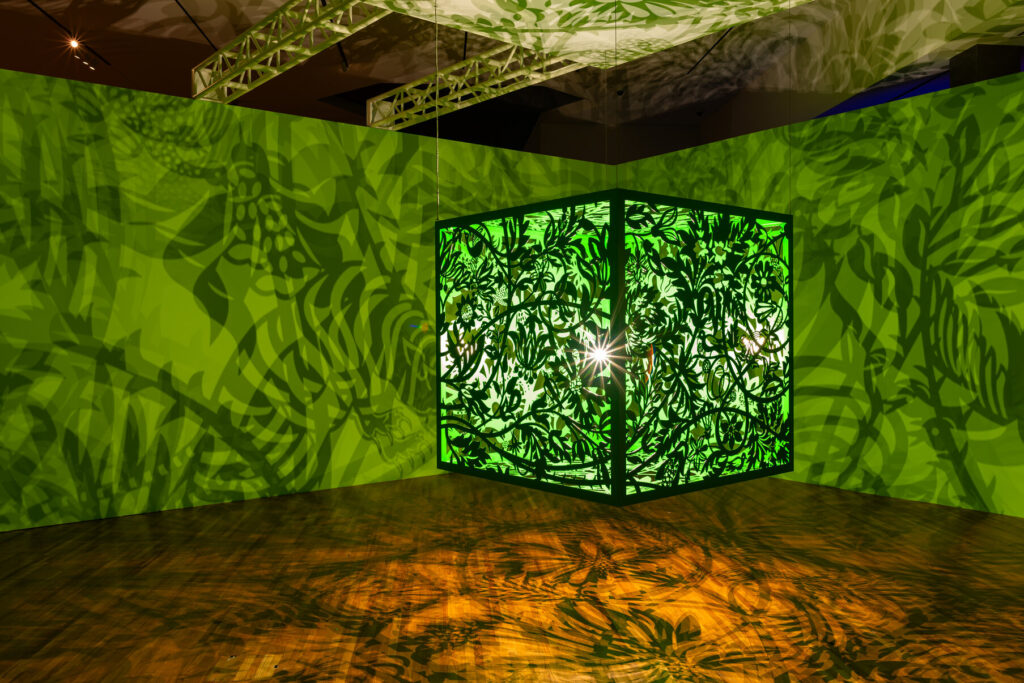
The tower-like installation, The Matriarch: Unraveled Threads, by Montreal-based Cameroonian-Belgian artist Mallory Lowe Mpoka contains more than 300 panels. The artist decided to create it when her grandmother passed away and she unexpectedly became the matriarch of her family.
The lighthouse is built from various materials and uses many mediums, like analog photography, screen printing, photo transfer, embroidery on dyed cotton and linen with red earth pigments, acrylic, paper, and steel. The fabric came from her family’s workshop in Cameroon and was dyed there with the earth. The photographs come from different sources, combining self-portraits with images from ancestral archives as well as contemporary portraits. The stories created by them are hypothetical, and do not follow any linear timeline. Together they create a circle, much like a tribal circle, where the main idea is to be together, belonging to the tribe and its history. The artist addresses the idea of how family continues to live in you and in generations to come. Not just your genes but your memories and cultural inheritance include more of the past, present and future than your individual time allows you to experience. The responsibility is to remember, share and pass down your cultural and historical inheritance. As the lighthouse guides people safely to shore, your guidance can influence coming generations to remember who they are and to make the right choices. It also reminds me of the symbol of a single candle shining in the dark. While there may be other lit candles as well, they can’t take away the light from yours. The images are illuminated from inside the lighthouse. Light, besides being a physical element in this artwork, also becomes a metaphor for enlightenment of the heart and mind.
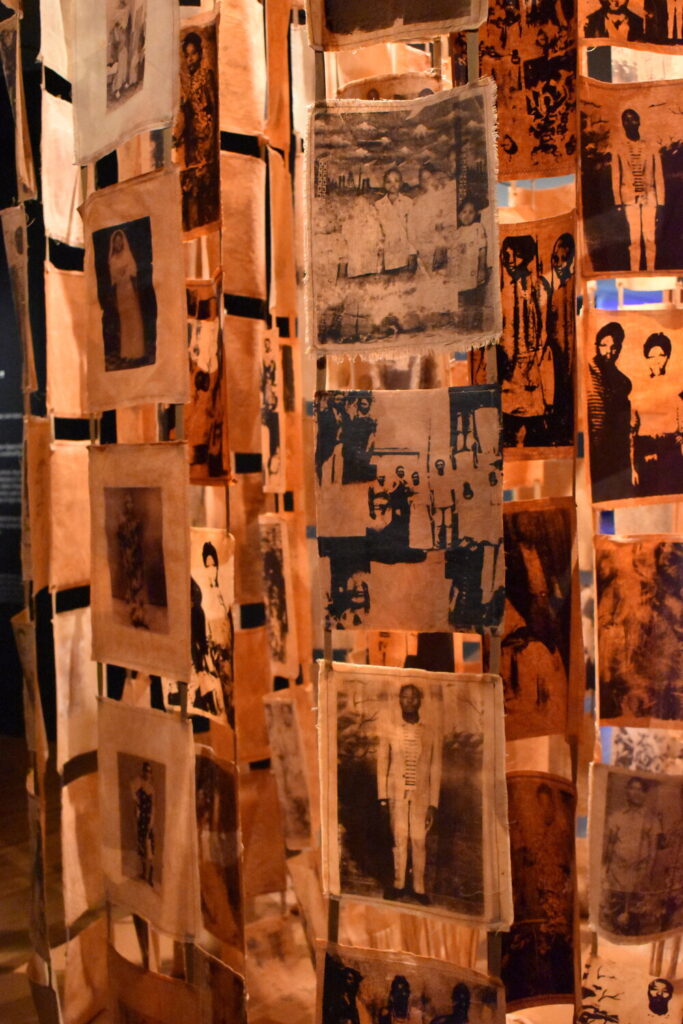
Phillip K. Smith III’s Two Corners is a 3D work of colour-choreographed large reflective panels placed in two opposing corners of the room. It is a very intensive experience as I become a part of it when stepping into its universal space, surrounded by its ever-changing colours and interplaying light. Infinity is the right word to describe this installation. When I turned from one wall to another it seemed to open, giving me the feeling that I could walk further without any limit. The desert-like landscape horizon is confusing. I think it made me understand what a mirage really is. The changing of colors further deepens this impression. There is a blue sky filling the room for a short time, then the redness of a sunset or the greenness of fields. Sometimes the colors appear at the same time overlapping and framing each other. This shiny orgy of colors is bigger than my ‘perception’ and addresses the unconscientious layers of my brain. They instill different moods and feelings, turning my attention to these underrated territories of our minds.
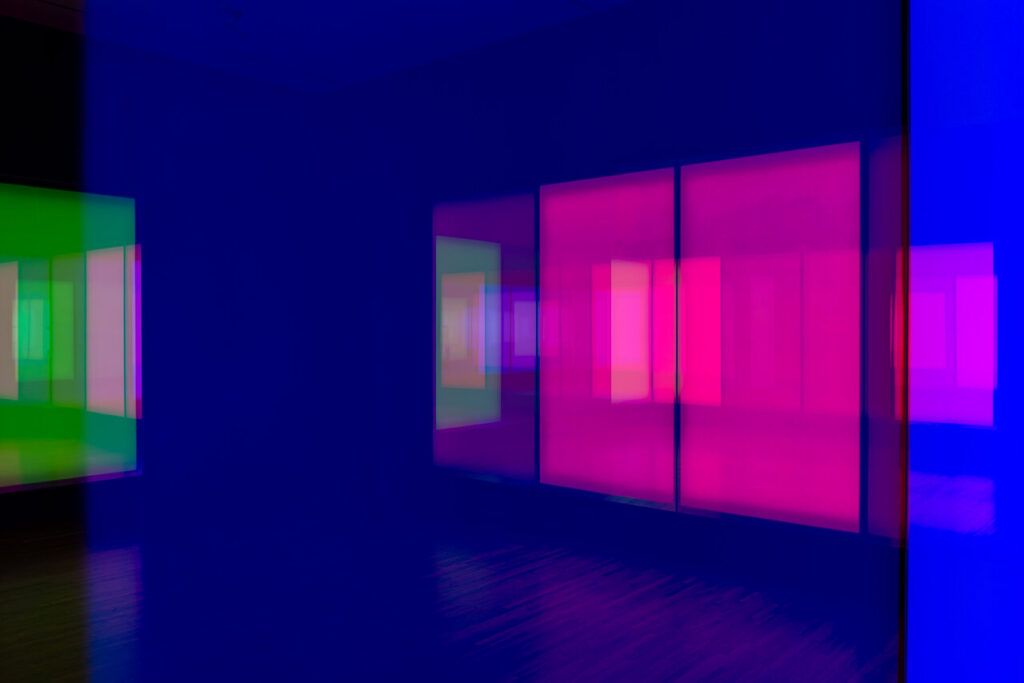
As Marianne Fenton, Special Projects Curator, Aga Khan Museum summarized, “The installations and objects in the exhibition explore our shared humanity, encouraging us to experience light through the perspectives of these artists who have captured its emotional, spiritual, and physical presentations.” The exhibition, Light: Visionary Perspectives focuses on the power of light over darkness. Exploring both historical and contemporary understanding and creative interpretations of light. It shows us the possibility of new, hopeful horizons.
Images are courtesy of Aga Khan Museum.
*Exhibition information: Light: Visionary Perspectives, till April 21, 2025, Aga Khan Museum, 77 Wynford Drive, Toronto. Museum hours: Tue & Thu – Sun 10:30 am – 5:30 pm, Wed 10 am – 8 pm.
